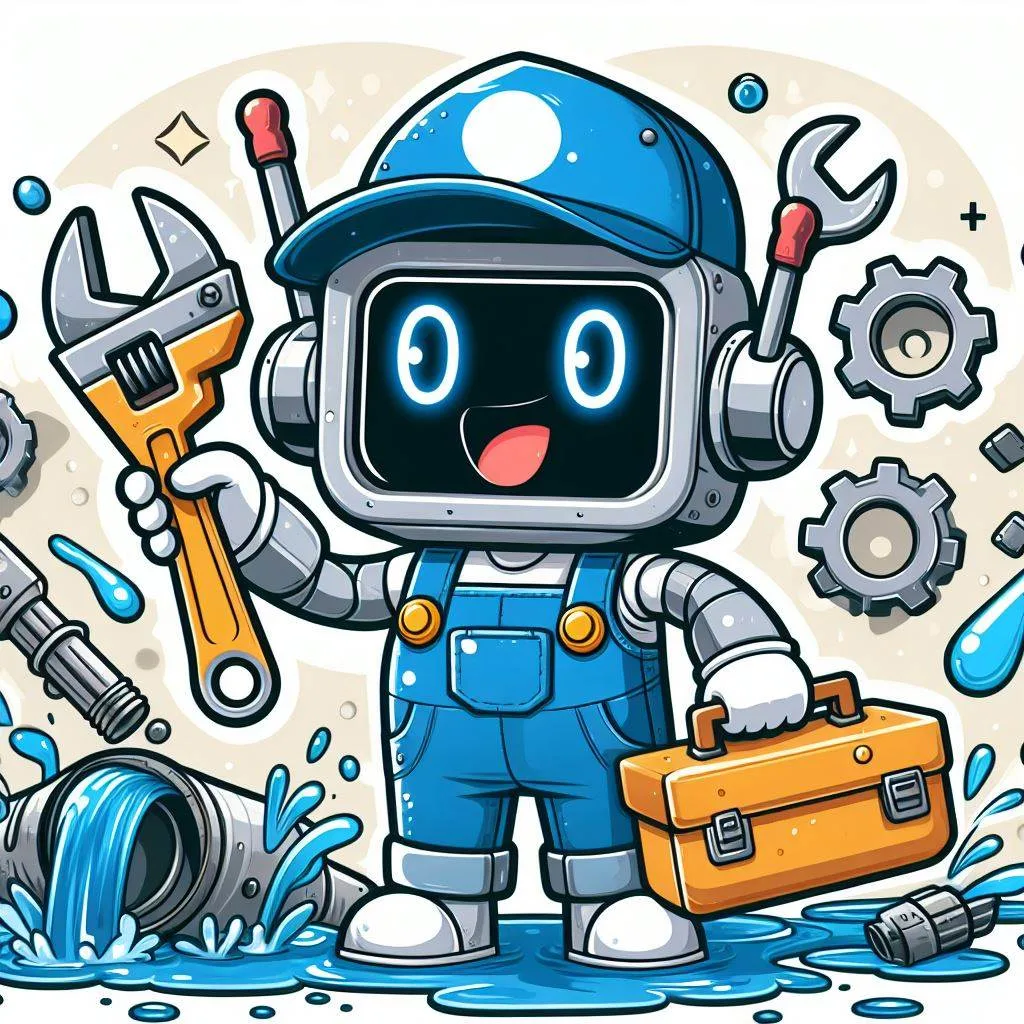✅ AI & Automation Tools for Local Businesses
Your complete guide to supercharging local operations with smart technology
Table of Contents
- Introduction: Why AI & Automation Matter
- 1. Understanding AI & Automation
- 1.1 What Is AI?
- 1.2 Benefits of Automation
- 1.3 Common Misconceptions
- 2. Customer Engagement Tools
- 2.1 AI Chatbots & Virtual Assistants
- 2.2 SMS & Email Automation
- 2.3 Social Media Scheduling & Monitoring
- 3. Marketing & Lead Generation
- 3.1 Local SEO Automation
- 3.2 PPC & Ad Automation
- 3.3 Review & Reputation Management
- 4. Operations & Workflow Automation
- 4.1 Appointment Scheduling & Reminders
- 4.2 Inventory & Order Management
- 4.3 Invoicing & Billing Automation
- 5. Analytics & Reporting Tools
- 5.1 Business Intelligence Dashboards
- 5.2 Automated Reporting
- 5.3 Predictive Analytics
- 6. Choosing & Implementing Tools
- 6.1 Needs Assessment & Budgeting
- 6.2 Integration & Training
- 6.3 Measuring ROI & Iteration
- Conclusion & Next Steps
- 25 Frequently Asked Questions
- 25 Extra Keywords
Introduction: Why AI & Automation Matter
Local businesses juggle operations, marketing, customer service, and finances every day. AI and automation tools remove repetitive tasks, deliver personalized experiences at scale, and free up time for strategic growth. In this guide, we’ll explore the must‑have solutions that transform small shops, service providers, and local enterprises into tech‑savvy powerhouses.
1. Understanding AI & Automation
1.1 What Is AI?
Artificial Intelligence uses algorithms and data to mimic human reasoning—whether that’s understanding customer queries, predicting sales trends, or optimizing ad spend.
1.2 Benefits of Automation
- Time Savings: Automate routine tasks like appointment reminders and invoice generation.
- Consistency: Ensure every customer receives the same high-quality experience.
- Scalability: Handle spikes in demand without hiring extra staff.
1.3 Common Misconceptions
AI isn’t just for big corporations, and automation doesn’t necessarily require coding. Many tools offer no‑code interfaces tailored for local business owners.
2. Customer Engagement Tools
2.1 AI Chatbots & Virtual Assistants
Platforms like ManyChat and Tidio can answer FAQs, schedule appointments, and collect lead info 24/7—boosting conversion while you sleep.
2.2 SMS & Email Automation
Tools such as Twilio and Mailchimp automate reminders, promotions, and follow‑ups, driving repeat business without manual outreach.
2.3 Social Media Scheduling & Monitoring
Buffer and Hootsuite let you plan posts, auto‑respond to comments, and track engagement across Facebook, Instagram, and Twitter.
3. Marketing & Lead Generation
3.1 Local SEO Automation
Yext and BrightLocal automate citation management and review requests—improving your visibility in “near me” searches.
3.2 PPC & Ad Automation
AdEspresso and Smartly.io optimize Facebook and Google Ads in real‑time, adjusting bids and budgets based on performance.
3.3 Review & Reputation Management
BirdEye and Podium aggregate reviews, send automated requests, and alert you to new feedback so you can act fast.
4. Operations & Workflow Automation
4.1 Appointment Scheduling & Reminders
Calendly and Acuity sync your calendar, let customers self-book, and send automated SMS/email confirmations and follow‑ups.
4.2 Inventory & Order Management
Shopify’s local selling features and Zoho Inventory automate stock tracking, order alerts, and supplier reorders to prevent stockouts.
4.3 Invoicing & Billing Automation
QuickBooks Online and FreshBooks generate invoices, auto-send payment reminders, and reconcile transactions without manual data entry.
5. Analytics & Reporting Tools
5.1 Business Intelligence Dashboards
Tools like Tableau Public and Google Data Studio connect to your data sources to deliver real‑time sales and operations insights.
5.2 Automated Reporting
Supermetrics and Klipfolio pull metrics from ads, social, and website analytics to email you weekly performance briefs.
5.3 Predictive Analytics
Predictive tools like Pipedrive’s AI and HubSpot’s sales forecasting use historical data to anticipate demand and optimize staffing.
6. Choosing & Implementing Tools
6.1 Needs Assessment & Budgeting
Start with a process audit: identify time sinks, customer pain points, and revenue opportunities. Allocate budget to high‑impact areas first.
6.2 Integration & Training
Ensure your tools share data—use Zapier or Integromat to connect systems. Train your team with short, task‑focused sessions to drive adoption.
6.3 Measuring ROI & Iteration
Set clear KPIs (time saved, leads generated, revenue per customer) and review monthly. Iterate workflows based on results and feedback.
Conclusion & Next Steps
AI and automation are no longer optional—they’re essential for local businesses aiming to compete and grow. Start small: pick one engagement tool, one marketing automation, and one operational workflow to automate today. Measure the impact, refine your approach, and scale up. Your competitors who delay will be left behind.
25 Frequently Asked Questions
1. Do I need coding skills to use these tools?
No—many platforms offer no-code builders or simple integrations.
2. What’s the first tool I should try?
Start with a chatbot or scheduling tool—quick wins that free up hours.
3. How much do these tools cost?
Plans range from free tiers to \$50–\$200/month depending on features.
4. Can small teams manage AI implementations?
Yes—focus on one workflow at a time and leverage vendor support.
5. Will automation feel impersonal to customers?
Properly configured personalization tokens and friendly tone preserve authenticity.
6. How do I measure time saved?
Track hours spent on tasks before and after automation via time‑tracking apps.
7. Are AI tools secure?
Choose platforms with SOC 2 compliance and data encryption in transit and at rest.
8. What if a tool doesn’t fit my needs?
Most offer free trials—test before committing and switch if necessary.
9. Can I integrate multiple tools?
Yes—use integration platforms like Zapier to sync data between apps.
10. How do I train my team?
Host short workshops, create cheat‑sheets, and assign power users as internal champions.
11. Is AI replacing jobs?
It augments roles—team members shift from manual tasks to strategic work.
12. What pitfalls should I watch for?
Over-automation without oversight can lead to mistakes—monitor logs and feedback closely.
13. How often update workflows?
Review quarterly and refine based on performance data and new tool features.
14. Do these tools work offline?
Most require internet connectivity, but dashboards often work on mobile devices.
15. Can freelancers manage automation?
Yes—engage freelance automation specialists for setup and training.
16. How to handle customer data?
Ensure GDPR/CCPA compliance by selecting tools with proper data controls.
17. What’s the ROI timeframe?
Many see returns within weeks on high-impact use cases like chatbots and email flows.
18. Are there industry‑specific solutions?
Yes—look for vertical‑focused apps tailored to salons, restaurants, real estate, etc.
19. How do I avoid vendor lock‑in?
Prefer tools with open APIs and easy data export options.
20. Can I automate compliance tasks?
Yes—tools exist for automated tax filing reminders and document storage workflows.
21. What’s the role of human oversight?
Critical—automations need regular review to ensure accuracy and relevance.
22. How to choose between similar tools?
Compare on ease of use, integration options, support, and cost per user.
23. Can automation help with staffing?
Yes—predictive analytics can forecast peak times and optimize shift scheduling.
24. What metrics matter most?
Time saved, lead conversion rate, customer satisfaction scores, and revenue growth.
25. What’s the first step?
Audit your current manual tasks, identify the biggest pain point, and automate that first.
25 Extra Keywords
- local business AI tools
- automation for small business
- chatbot for local services
- appointment automation
- email drip campaigns
- social media scheduler
- local SEO automation
- AdEspresso alternatives
- review management software
- inventory automation
- invoice automation tools
- BI dashboard for SMBs
- predictive analytics small biz
- Zapier local business
- No-code automation apps
- customer engagement AI
- SMS reminder service
- automated reporting tools
- workflow optimization SMB
- GDPR compliance automation
- CCPA local business
- integration platform Zapier
- AI training for staff
- freelance automation expert
- Market Wiz automation guide

















